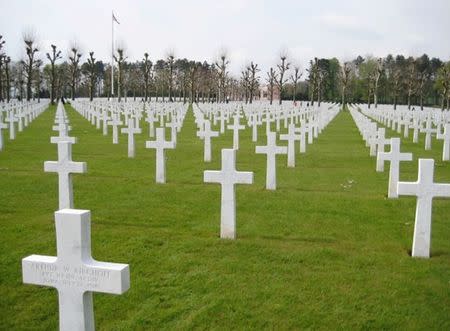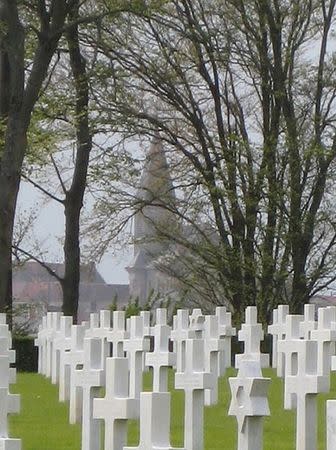American volunteers bled and led way to WW1 100 years ago
By Alden Bentley NEW YORK (Reuters) - Missing from chapters on World War One in most U.S. textbooks is the name of Edward Mandell Stone, a 27-year-old Harvard graduate from Chicago who made history with his death as a machine gunner in France 100 years ago this month. Stone was not fighting for his country. The United States initially refused to take sides and was two years from sending soldiers to the Western Front. He was in the French Foreign Legion. His death on Feb. 27, 1915, from shrapnel wounds in the trenches near the Aisne River, made him the first American killed in action, according to writer Gary Ward in VFW Magazine, the official publication of the U.S. Veterans of Foreign Wars. Stone was one of hundreds of idealistic young men in 1915, '16 and '17 who volunteered to fight, save lives as ambulance drivers, and find glory helping America’s historic ally France repel the German army. Others joined British and Canadian military forces. "They were considered in many cases to be ignoring the neutrality of the United States," said Doran Cart, senior curator of the National World War I Museum at Liberty Memorial in Kansas City, Missouri. "They weren't considered traitors and weren't arrested or anything like that, but they were not looked upon with affection." America was strongly isolationist when the war began in 1914, even as anti-German sentiment grew. Volunteering was frowned upon by the government, but such men as Stone (and some women) pointed the way as U.S. entry became inevitable. The United States entered the war against Germany on April 4, 1917 and eventually lost some 116,500 soldiers and sailors. This was more than in Korea and Vietnam combined, but a fraction of the 9 million killed in the four-year conflict that consumed 36 countries, changed warfare, redrew maps from Europe to the Middle East, and left America at the top of the global order. A century on, it is nearly impossible to pin down precise numbers and who died first, where and what their status of service was. Easily, 200 Americans died on or near French battlefields, excluding those on ships torpedoed by the Germans, before the American Expeditionary Forces saw action. Many received France's Croix de Guerre medal for valor, including this writer's great uncle, Paul Cody Bentley, an ambulance driver for the American Field Service who arrived in May 1917 and died four months later after a German shell hit the ambulance he was driving on the Chemin des Dames. American civilians who served before (and after) U.S. entry included the writer Ernest Hemingway in Italy who, like Bentley in France, volunteered as an ambulance driver. Hemingway's 1929 “A Farewell to Arms” memorialized his 1918 ambulance experience and wounds in the American Red Cross. Among those killed were American poet Alan Seeger, who died at the Somme in July 1916 and gained fame from poems inspired by combat. FIRST IN HARM'S WAY Historian Edwin W. Morse, in his 1919 "The Vanguard of American Volunteers," wrote the volunteers were "largely instrumental in creating and in crystallizing public opinion among their own countrymen." Their ranks swelled through the murderous battles of 1916. The ambulance services expanded, newfangled airplanes offered high-risk adventure in the Lafayette Escadrille and other French flying squadrons, and the famously tough Legionnaires saw constant action. The first American civilian to die appears to have been Leon Thrasher, a mining engineer from Massachusetts who drowned in March 1915 in the torpedoing of the Falaba off the English coast, according to many accounts, including The New York Times Current History Volume 3 (1917). This was two months before a German submarine sank the British passenger ship Lusitania on May 7, 1915, killing 128 American passengers. The deaths of Americans at sea forced U.S. President Woodrow Wilson to demand Germany abandon unrestricted submarine warfare and provided a pretext for the president to end U.S. neutrality when indiscriminate attacks on shipping resumed. Thus began an unprecedented buildup of the U.S. Army, which at the time was barely large enough to fight a 1916 border skirmish against Mexican revolutionary Pancho Villa. Volunteers at home helped lay the groundwork by forming the first civilian military training camps, in what became the "Plattsburg Movement," named for the location in New York state of the highest profile camps, in 1915 and 1916. The well-to-do college boys and businessmen who trained were the progenitors of the modern Reserve Officers' Training Corps. The first small contingent of doughboys, led by General John J. Pershing, arrived in Paris in June 1917. Eventually more than 4 million U.S. soldiers were mobilized. Of those, the 1.5 million sent overseas were decisive in helping France and Britain defeat Germany. The Armistice ending the war was signed on Nov. 11, 1918. (Reporting by Alden Bentley; Editing by Howard Goller)



